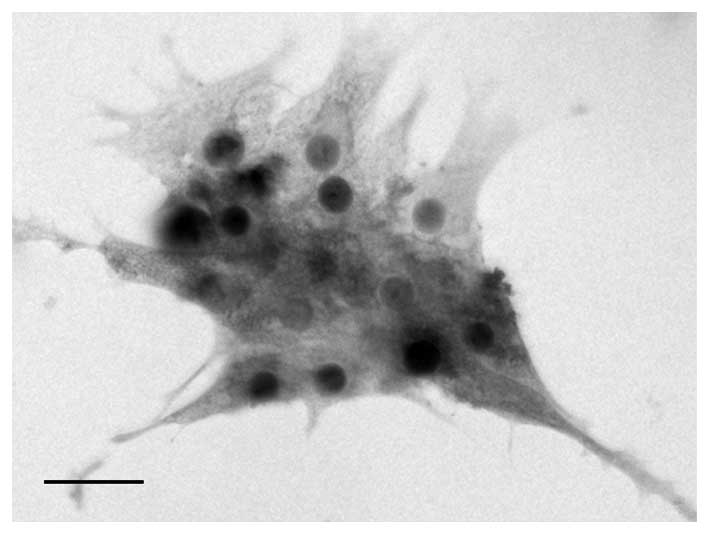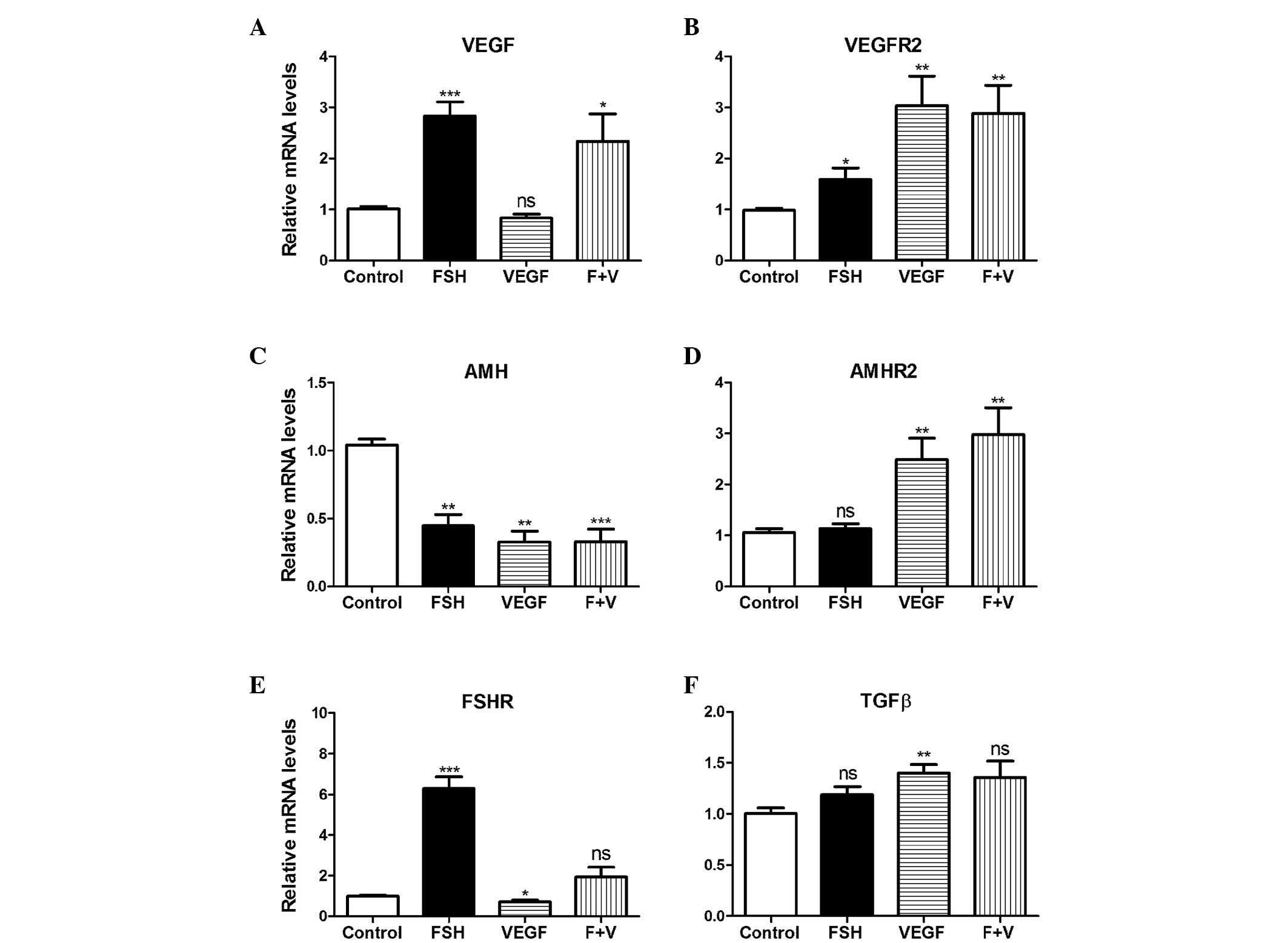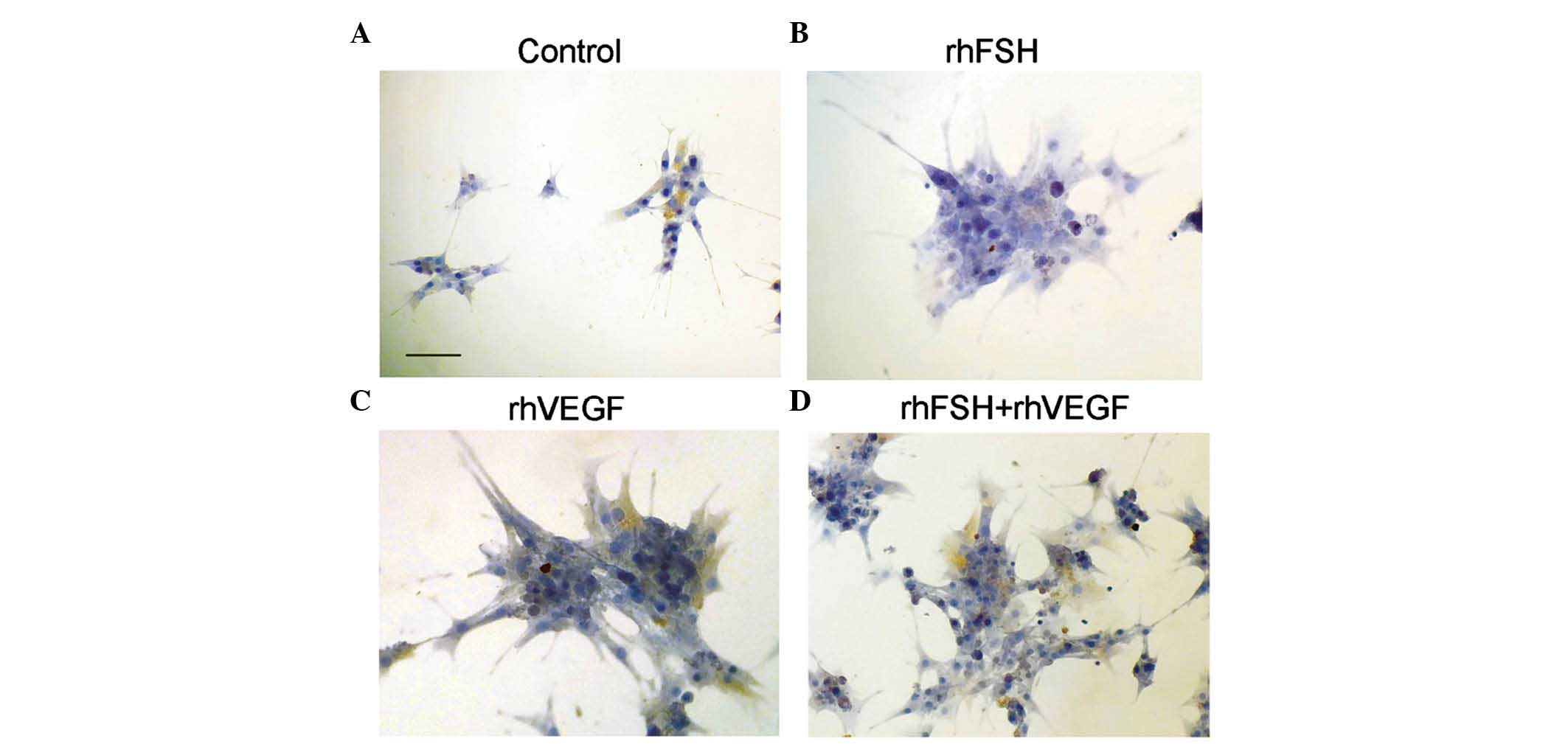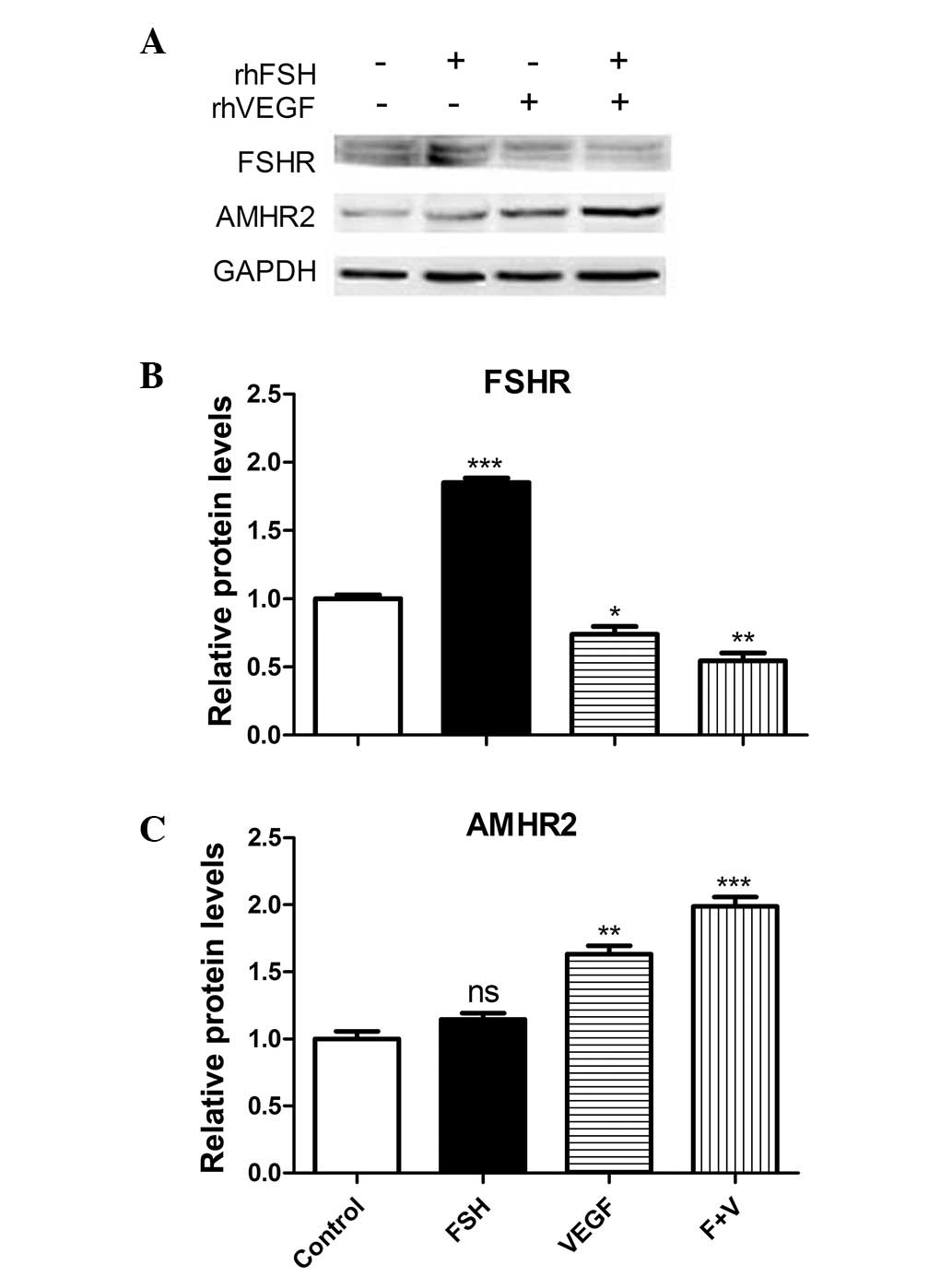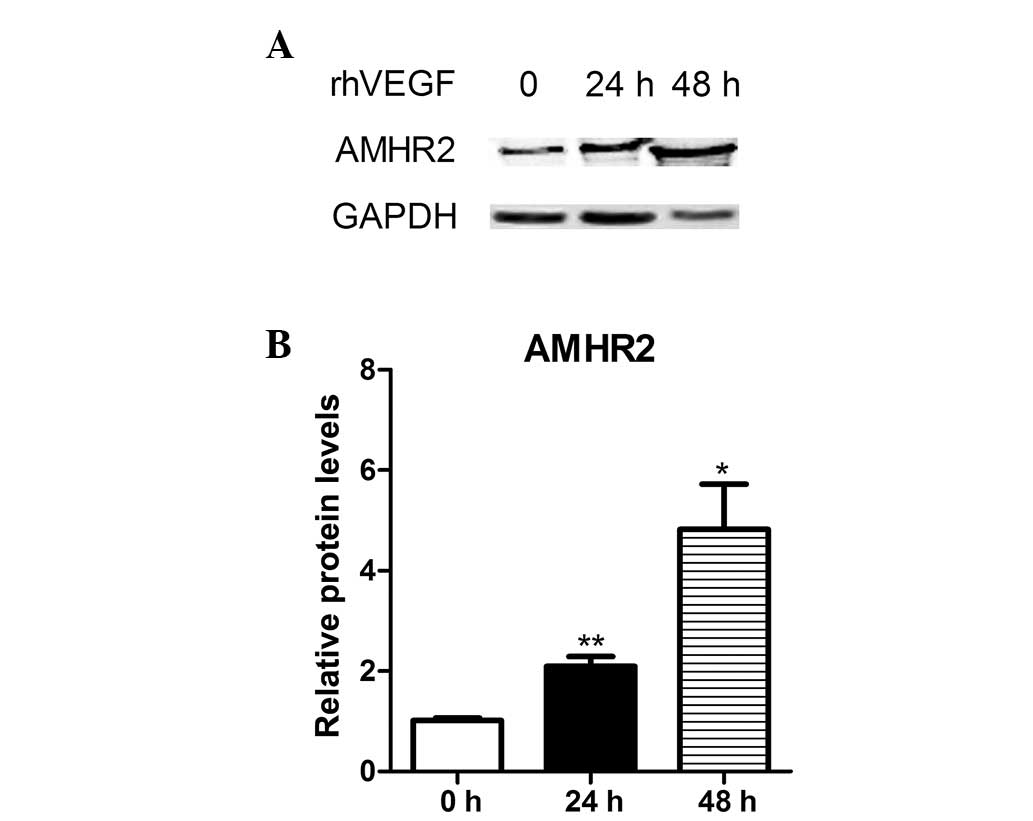|
1
|
Pellatt L, Rice S, Dilaver N, Heshri A,
Galea R, Brincat M, Brown K, Simpson ER and Mason HD:
Anti-Mullerian hormone reduces follicle sensitivity to
follicle-stimulating hormone in human granulosa cells. Fertil
Steril. 96:1246–1251.e1. 2011. View Article : Google Scholar
|
|
2
|
Durlinger AL, Gruijters MJ, Kramer P,
Karels B, Ingraham HA, Nachtigal MW, Uilenbroek JT, Grootegoed JA
and Themmen AP: Anti-Müllerian hormone inhibits initiation of
primordial follicle growth in the mouse ovary. Endocrinology.
143:1076–1084. 2002.PubMed/NCBI
|
|
3
|
Gleicher N, Kim A, Kushnir V, Weghofer A,
Shohat-Tal A, Lazzaroni E, Lee HJ and Barad DH: Clinical relevance
of combined FSH and AMH observations in infertile women. J Clin
Endocrinol Metab. 98:2136–2145. 2013. View Article : Google Scholar : PubMed/NCBI
|
|
4
|
Iliodromiti S, Kelsey TW, Wu O, Anderson
RA and Nelson SM: The predictive accuracy of anti-Müllerian hormone
for live birth after assisted conception: A systematic review and
meta-analysis of the literature. Hum Reprod Update. 20:560–570.
2014. View Article : Google Scholar : PubMed/NCBI
|
|
5
|
Jeppesen JV, Anderson RA, Kelsey TW,
Christiansen SL, Kristensen SG, Jayaprakasan K, Raine-Fenning N,
Campbell BK and Yding Andersen C: Which follicles make the most
anti-Mullerian hormone in humans? Evidence for an abrupt decline in
AMH production at the time of follicle selection. Mol Hum Reprod.
19:519–527. 2013. View Article : Google Scholar : PubMed/NCBI
|
|
6
|
Imhoff FM, Yang D, Mathew SF, Clarkson AN,
Kawagishi Y, Tate WP, Koishi K and McLennan IS: The type 2
anti-Müllerian hormone receptor has splice variants that are
dominant-negative inhibitors. FEBS Lett. 587:1749–1753. 2013.
View Article : Google Scholar : PubMed/NCBI
|
|
7
|
Fu D, Lv X, Hua G, He C, Dong J, Lele SM,
Li DW, Zhai Q, Davis JS and Wang C: YAP regulates cell
proliferation, migration and steroidogenesis in adult granulosa
cell tumors. Endocr Relat Cancer. 21:297–310. 2014. View Article : Google Scholar : PubMed/NCBI
|
|
8
|
Kaya A, Atabekoglu CS, Kahraman K, Taskin
S, Ozmen B, Berker B and Sonmezer M: Follicular fluid
concentrations of IGF-I, IGF-II, IGFBP-3, VEGF, AMH and inhibin-B
in women undergoing controlled ovarian hyperstimulation using GnRH
agonist or GnRH antagonist. Eur J Obstet Gynecol Reprod Biol.
164:167–171. 2012. View Article : Google Scholar : PubMed/NCBI
|
|
9
|
Abramovich D, Irusta G, Bas D, Cataldi NI,
Parborell F and Tesone M: Angiopoietins/TIE2 system and VEGF are
involved in ovarian function in a DHEA rat model of polycystic
ovary syndrome. Endocrinology. 153:3446–3456. 2012. View Article : Google Scholar : PubMed/NCBI
|
|
10
|
Doyle LK, Walker CA and Donadeu FX: VEGF
modulates the effects of gonadotropins in granulosa cells. Domest
Anim Endocrinol. 38:127–137. 2010. View Article : Google Scholar
|
|
11
|
Peitsidis P and Agrawal R: Role of
vascular endothelial growth factor in women with PCO and PCOS: A
systematic review. Reprod Biomed Online. 20:444–452. 2010.
View Article : Google Scholar : PubMed/NCBI
|
|
12
|
Di Pietro M, Parborell F, Irusta G,
Pascuali N, Bas D, Bianchi MS, Tesone M and Abramovich D: Metformin
regulates ovarian angiogenesis and follicular development in a
female polycystic ovary syndrome rat model. Endocrinology.
156:1453–1463. 2015. View Article : Google Scholar : PubMed/NCBI
|
|
13
|
Kumar P, Sait SF, Sharma A and Kumar M:
Ovarian hyperstimulation syndrome. J Hum Reprod Sci. 4:70–75. 2011.
View Article : Google Scholar : PubMed/NCBI
|
|
14
|
Ji Y, Lu X, Zhong Q, et al:
Transcriptional profiling of mouse uterus at pre-implantation stage
under VEGF repression. PLoS One. 8:e572872013. View Article : Google Scholar : PubMed/NCBI
|
|
15
|
Thomas FH, Telfer EE and Fraser HM:
Expression of anti-Mullerian hormone protein during early
follicular development in the primate ovary in vivo is influenced
by suppression of gonadotropin secretion and inhibition of vascular
endothelial growth factor. Endocrinology. 148:2273–2281. 2007.
View Article : Google Scholar : PubMed/NCBI
|
|
16
|
Lu X, Ji Y, Zhang L, Zhang Y, Zhang S, An
Y, Liu P and Zheng Y: Resistance to obesity by repression of VEGF
gene expression through induction of brown-like adipocyte
differentiation. Endocrinology. 153:3123–3132. 2012. View Article : Google Scholar : PubMed/NCBI
|
|
17
|
Livak KJ and Schmittgen TD: Analysis of
relative gene expression data using real-time quantitative PCR and
the 2(-Delta Delta C(T)) Method. Methods. 25:402–408. 2001.
View Article : Google Scholar
|
|
18
|
Nishi Y, Yanase T, Mu Y, Oba K, Ichino I,
Saito M, Nomura M, Mukasa C, Okabe T, Goto K, et al: Establishment
and characterization of a steroidogenic human granulosa-like tumor
cell line, KGN, that expresses functional follicle-stimulating
hormone receptor. Endocrinology. 142:437–445. 2001. View Article : Google Scholar : PubMed/NCBI
|
|
19
|
Peluso C, Fonseca FL, Rodart IF,
Cavalcanti V, Gastaldo G, Christofolini DM, Barbosa CP and Bianco
B: AMH: An ovarian reserve biomarker in assisted reproduction. Clin
Chim Acta. 437:175–182. 2014. View Article : Google Scholar : PubMed/NCBI
|
|
20
|
Carlsson IB, Scott JE, Visser JA, Ritvos
O, Themmen AP and Hovatta O: Anti-Müllerian hormone inhibits
initiation of growth of human primordial ovarian follicles in
vitro. Hum Reprod. 21:2223–2227. 2006. View Article : Google Scholar : PubMed/NCBI
|
|
21
|
Cui Y, Shi Y, Cui L, Han T, Gao X and Chen
ZJ: Age-specific serum antimüllerian hormone levels in women with
and without polycystic ovary syndrome. Fertil Steril.
102:230–236.e2. 2014. View Article : Google Scholar
|
|
22
|
Li HW, Lee VC, Lau EY, Yeung WS, Ho PC and
Ng EH: Role of baseline antral follicle count and anti-Mullerian
hormone in prediction of cumulative live birth in the first in
vitro fertilisation cycle: A retrospective cohort analysis. PLoS
One. 8:e610952013. View Article : Google Scholar : PubMed/NCBI
|
|
23
|
Panchal S and Nagori C: Comparison of
anti-mullerian hormone and antral follicle count for assessment of
ovarian reserve. J Hum Reprod Sci. 5:274–278. 2013. View Article : Google Scholar : PubMed/NCBI
|
|
24
|
Rigon C, Andrisani A, Forzan M, D'Antona
D, Bruson A, Cosmi E, Ambrosini G, Tiboni GM and Clementi M:
Association study of AMH and AMHRII polymorphisms with unexplained
infertility. Fertil Steril. 94:1244–1248. 2010. View Article : Google Scholar
|
|
25
|
Kuo SW, Ke FC, Chang GD, Lee MT and Hwang
JJ: Potential role of follicle-stimulating hormone (FSH) and
transforming growth factor (TGFβ1) in the regulation of ovarian
angiogenesis. J Cell Physiol. 226:1608–1619. 2011. View Article : Google Scholar
|
|
26
|
Färkkilä A, Anttonen M, Pociuviene J,
Leminen A, Butzow R, Heikinheimo M and Unkila-Kallio L: Vascular
endothelial growth factor (VEGF) and its receptor VEGFR-2 are
highly expressed in ovarian granulosa cell tumors. Eur J
Endocrinol. 164:115–122. 2011. View Article : Google Scholar
|















